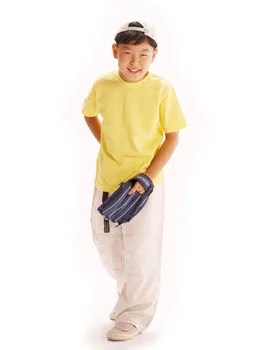How could a Little Leaguer possibly sustain more injuries than a grownup, fulltime pro baseball player?
It’s all about the enthusiasm of youth, according to the American Physical Therapy Association (APTA). The bottom line is that “Little League pitchers can throw more than 100 pitches per game — almost twice that of a professional pitcher — placing substantial stress on a young, still developing arm,” according to David A. Boyce, PT, Ed.D., OCS, ECS, assistant professor at Bellarmine University’s Physical Therapy Program in Louisville, KY.
Boyce, who has treated professional baseball players as well as Little Leaguers, says, “Kids sometimes mistake strength for proper pitching mechanics and may be trading six innings of excitement for years of debilitating arm and shoulder problems.”
Little League Elbow
 And it’s pitchers who run the greatest risk of injuries resulting from overuse or improper mechanics, leading to a condition known as “Little League Elbow” — a chronic inflammation of the growth plate in the elbow joint, which can feel like tendonitis. Boyce says he has seen children as young as 8 years old with this condition. “Pitchers who continue to pitch through the pain can eventually cause the growth plate to separate from the joint, requiring surgery to re-attach it.”
And it’s pitchers who run the greatest risk of injuries resulting from overuse or improper mechanics, leading to a condition known as “Little League Elbow” — a chronic inflammation of the growth plate in the elbow joint, which can feel like tendonitis. Boyce says he has seen children as young as 8 years old with this condition. “Pitchers who continue to pitch through the pain can eventually cause the growth plate to separate from the joint, requiring surgery to re-attach it.”
Baseball’s Safety Advisory Committee recommends that the first pitch introduced to Little Leaguers should be the fast ball at 8 years old, followed by the change-up at 10, the curve ball at 14, the knuckle ball at 15, and the slider and fork ball at 16. Boyce notes that this is because a fast ball features a standard grip, and pitchers don’t have to deviate and flex their wrists to throw it. “It’s when young pitchers start throwing curve balls that Little League Elbow starts to surface. Younger pitchers don’t possess the neuromuscular control and stability in their bones to withstand the forces that are placed across the elbow when throwing more technical pitches,” he adds.
Most Little Leaguers mistakenly throw with the force coming from the arm instead of the trunk, observes Boyce. “When children come to me with Little League Elbow, I tell them that the key to throwing harder is not arm strength, but trunk, leg, and hip strength. Too often we try to strengthen the arm, and get little or no lasting results.”
His advice: “Direct the front shoulder and hip toward the target. Let the legs and trunk supply the power, and let the arm function like a whip.”
Shoulder strains
Shoulders are also in danger during a pitch — because the shoulder is the most mobile joint in the body, it is also the most unstable, notes Boyce. The four rotator cuff muscles surrounding the shoulder are stressed during the acceleration and deceleration phases of pitching. These excessive forces can damage ligaments and muscles within the shoulder joint. To reduce the risk of injury, says Boyce, it is important that the muscles of the trunk and shoulder girdle be strong, stable, and flexible.
Be on the lookout
Because children tend to be less aware of their physical limitations, it is especially important that parents and coaches watch kids carefully for correct throwing mechanics, while advocating proper conditioning and pre- and post-game stretches, according to the APTA. “Attentive parents and coaches will maximize their child’s chances of having a healthy season,” says Boyce.
APTA recommends three important upper body stretches (pictured): the inferior shoulder stretch, the posterior shoulder stretch, and the rotator cuff stretch. “Once kids understand the proper way to throw, they need to concentrate on a pitching maintenance program that consists of exercise, stretching, proper pitching rotation and volume, and periods of active rest,” Boyce concludes.
PHYSICAL THERAPIST TIPS
ON HOW TO AVOID INJURING YOUR ARM
And what to do in case you do
Danny Smith, PT, DHSC, OCS, SCS, a physical therapist and board-certified sports physical therapist clinical specialist, runs clinics for Little League coaches in Tennessee. Smith recommends the following:
—Teach young athletes to be mindful of how their bodies feel. Pain is the first sign of a problem, and athletes of all ages need to pay close attention to any type of muscle twinge, tightening, or burning sensation.
—Coaches should carefully observe their pitchers’ techniques. Success on the field may be fleeting if the pitches ultimately are damaging a young player’s shoulder.
—Conditioning and strengthening exercises are most effective after mechanics are learned and put into action. If possible, begin a conditioning program at least a month before the season begins. A basic stretching regimen should be used before a player ever picks up a baseball.
—Players should start with short tosses and gradually work up to throwing the ball a greater distance. Increasing the velocity should be the final step.
—If the arm region is sore or tight, apply ice to the area for 10-15 minutes to help diminish the amount of blood that might otherwise leak into the muscle. When there is microscopic tearing of the muscle tissue, blood is leaking into the surrounding muscular tissue, causing pain and muscle spasms. Using ice will help reduce the pain, spasms, and inflammation associated with this condition.





















